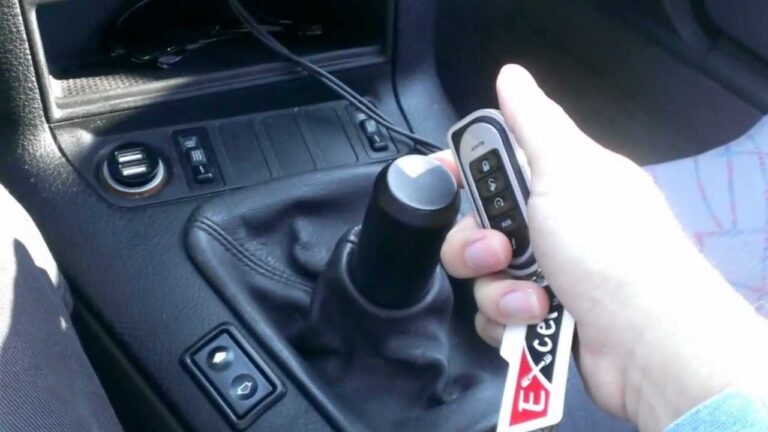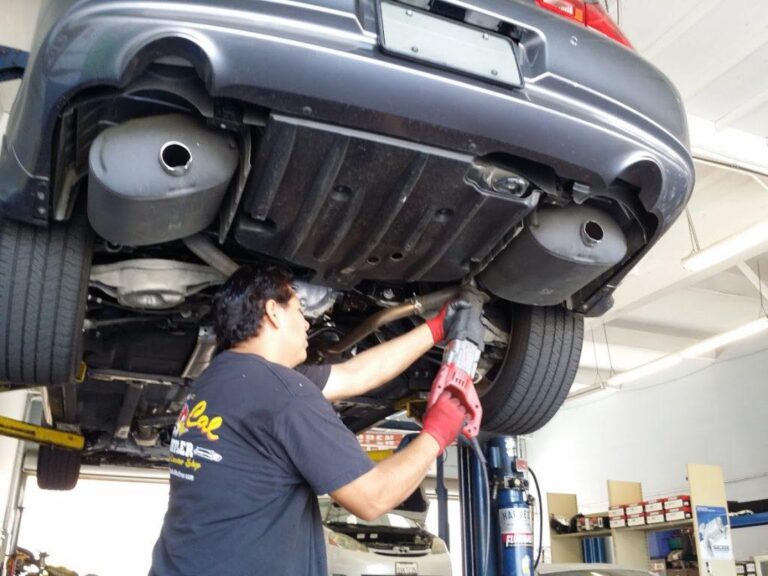Can A Bad Mass Air Flow Sensor Cause Transmission Problems?

The Mass Air Flow (MAF) sensor is a critical component in your vehicle’s engine management system. It measures the amount of air entering the engine, allowing the engine control unit (ECU) to adjust the air-fuel mixture for optimal combustion. While its primary job is related to engine performance, a malfunctioning MAF sensor can have a ripple effect on other vehicle systems. One common question that arises is whether a bad MAF sensor can cause transmission problems. Let’s explore how a faulty MAF sensor can impact your car’s transmission and overall driving experience.
What is a Mass Air Flow (MAF) Sensor?
The MAF sensor measures the amount of air entering the engine and sends this data to the vehicle’s ECU. This information helps the engine’s computer regulate the air-fuel mixture, ensuring the engine runs smoothly and efficiently. If the engine gets too much or too little air, it could cause poor performance, higher emissions, and even damage to other engine components.
Primary Functions of the MAF Sensor:
- Measures Airflow: Determines the volume of air entering the engine.
- Sends Data to ECU: The data helps the ECU adjust fuel delivery and ignition timing.
- Improves Fuel Efficiency: Ensures the engine gets the optimal fuel-air mixture for better fuel efficiency and performance.
How a Bad MAF Sensor Affects Engine Performance
A malfunctioning MAF sensor can directly affect the engine’s performance and efficiency. However, its impact doesn’t necessarily stop there. The way the engine runs is closely tied to how the transmission behaves. If the MAF sensor is providing inaccurate readings to the ECU, it can lead to several symptoms that may indirectly cause or mimic transmission issues.
1. Erratic Engine Behavior
A faulty MAF sensor can cause your engine to behave erratically. When the ECU doesn’t receive accurate data about the air entering the engine, it can lead to an improper air-fuel mixture. This can cause:
- Poor Acceleration: The engine may hesitate or stall when trying to accelerate, which can feel like a transmission issue.
- Rough Idle: If the engine isn’t running smoothly due to incorrect air-fuel mixture, it could affect the car’s idle speed, causing the vehicle to shake or stall, and making it feel like there’s an issue with the transmission.
2. Transmission Slipping
In some cases, a bad MAF sensor may indirectly cause transmission slipping. The engine’s performance is closely tied to the way the transmission shifts. If the engine is misfiring or struggling to run properly due to faulty MAF sensor data, the transmission may have trouble shifting smoothly. A slipping transmission can manifest as hesitation when accelerating, jerky shifts, or delayed gear engagement.
- Torque Converter Issues: The torque converter in the transmission is responsible for transferring power from the engine to the wheels. If the engine isn’t performing optimally due to a bad MAF sensor, the torque converter may not engage or disengage properly, causing slipping or erratic shifts.
3. Shifting Problems
Transmission shifting relies on precise signals from the engine. If the engine’s performance is compromised because of incorrect readings from a malfunctioning MAF sensor, the transmission may not shift at the right time or may shift too late. This can result in:
- Delayed Shifting: The car might hesitate or take longer to shift from one gear to the next.
- Hard Shifts: A bad MAF sensor can cause hard or jerky shifts, especially when accelerating.
4. Increased Engine Load
If the engine isn’t running efficiently due to a faulty MAF sensor, it can cause increased engine load. This means the engine might be working harder than necessary to keep the car moving, which can put undue strain on the transmission. Over time, this additional load could potentially cause transmission wear and overheating.
Why Does a Bad MAF Sensor Affect the Transmission?
While the MAF sensor is not directly connected to the transmission, both systems are heavily reliant on the engine’s performance. Here’s how they are linked:
1. ECU’s Role in Both Systems
The ECU uses data from the MAF sensor to adjust fuel delivery and ignition timing. This affects the engine’s power output and how smoothly it operates. When the engine is misfiring or not running properly due to a faulty MAF sensor, the transmission’s control module may not receive the correct signals to properly manage the transmission’s shifting behavior.
2. Engine Load and Transmission Response
The transmission is designed to respond to the engine’s power output. If the engine is struggling because of inaccurate readings from the MAF sensor, it will put more strain on the transmission. This added load can affect how the transmission shifts, how it engages gears, and how it responds under acceleration.
3. Throttle Control and Shifting
The engine’s throttle control system is closely linked with both the MAF sensor and the transmission. A bad MAF sensor can disrupt throttle control, which impacts how the transmission responds to acceleration demands. If the throttle isn’t providing the correct input, the transmission may fail to downshift or upshift at the right moments.
Common Symptoms of a Bad MAF Sensor
Before assuming the MAF sensor is causing transmission issues, it’s essential to identify the signs of a malfunctioning sensor. Some common symptoms of a bad MAF sensor include:
1. Check Engine Light
A bad MAF sensor often triggers the check engine light (CEL). You may also see a specific diagnostic trouble code (DTC) related to the MAF sensor, such as P0101 (Mass Air Flow Circuit Range/Performance Problem).
2. Poor Fuel Economy
Since the MAF sensor is responsible for calculating the air-fuel mixture, a faulty sensor can cause the engine to run rich (too much fuel) or lean (too little fuel). This can result in poor fuel economy.
3. Rough Idle or Stalling
As the MAF sensor regulates the engine’s air-fuel mixture, a malfunction can cause the engine to idle roughly or even stall at low speeds.
4. Engine Hesitation
A faulty MAF sensor can cause the engine to hesitate or lag when accelerating, which could feel like transmission slipping or hesitation.
5. Unusual Engine Sounds
If the engine is misfiring or running inefficiently due to a bad MAF sensor, you may hear popping or sputtering noises from the exhaust, as well as a lack of smooth operation.
How to Fix Transmission Issues Caused by a Bad MAF Sensor
If you suspect the MAF sensor is causing your transmission problems, here’s what you can do:
1. Replace the MAF Sensor
The first step is to replace the faulty MAF sensor. This can restore proper engine performance and indirectly fix transmission shifting issues related to engine inefficiency.
2. Check for Vacuum Leaks
Sometimes, a vacuum leak or dirty MAF sensor can mimic similar symptoms. Ensure there are no vacuum leaks in the intake system, and clean the MAF sensor with a special cleaner to remove debris and dirt.
3. Inspect the Transmission
After fixing the MAF sensor, it’s important to check the transmission for any lingering issues. If the transmission is slipping or shifting poorly, have a mechanic inspect the transmission fluid and control module for any underlying problems.
4. Clear the Codes
After replacing the MAF sensor, use an OBD-II scanner to clear any stored trouble codes and reset the check engine light.
Conclusion
In conclusion, a bad MAF sensor can indirectly cause transmission problems, but it is not a direct cause. The MAF sensor affects the engine’s air-fuel mixture, and when the engine doesn’t perform optimally, the transmission may struggle with shifting, resulting in slipping, delayed shifts, or rough transitions between gears. While a faulty MAF sensor isn’t the only culprit behind transmission issues, it’s an important part of the equation that should be addressed promptly to avoid further complications. If you’re experiencing symptoms of both engine and transmission problems, it’s essential to have both systems checked and repaired as needed to restore your vehicle’s performance.





